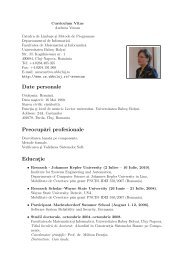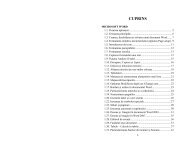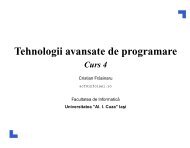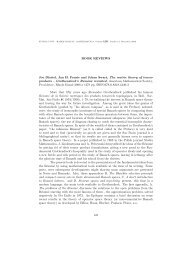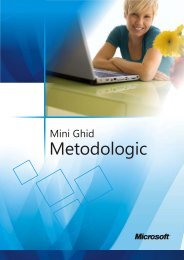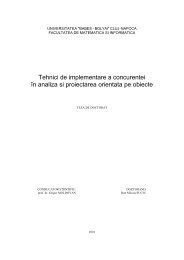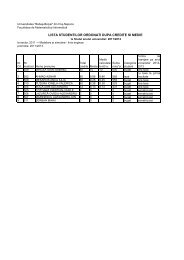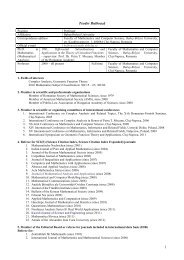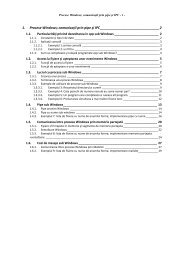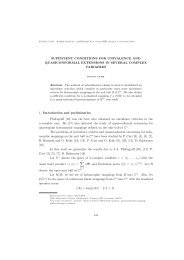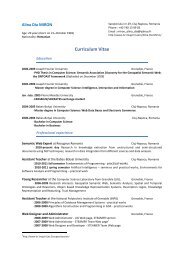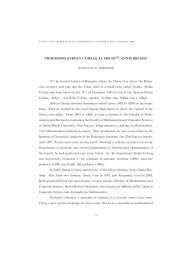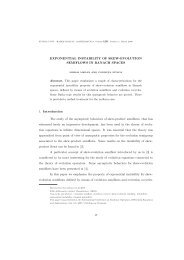CONTENTS
CONTENTS
CONTENTS
You also want an ePaper? Increase the reach of your titles
YUMPU automatically turns print PDFs into web optimized ePapers that Google loves.
256 SORIN JIBOTEAN (1) AND RARES FLORIN BOIAN (2)<br />
the score of the test, the duration it took the patient to complete the test, and<br />
percentage of focus on the test out of the entire time spent in the virtual environment<br />
(see Figure 2).<br />
The percentage of focus is calculated using the position of the interaction point<br />
(displayed as a cross-hair). The time when the patient focuses on the test is defined as<br />
the time the interaction point is above the test, either interacting with the questions<br />
or not interacting with anything else. The rest of the time spent arranging the objects<br />
on the desk or looking around is considered out–of–focus time. The graph displays<br />
the ratio between the focus time and the total test time as a percentage.<br />
Figure 2. Visualization of recorded measurements<br />
The test results can be view before or after the therapy session. The graphs<br />
present a historical view of the therapy records, allowing easy visual evaluation of<br />
performance and progress.<br />
5. Future Work<br />
The development of the virtual environment presented here has been completed<br />
as the application reached a stable version. The next step is to validate it with<br />
specialists in psychology and psychiatry. Finally this work will be validated and its<br />
effectively and results evaluated in a pilot study followed by patient trials.<br />
References<br />
[1] R. Boian, Bouzit, and G. M; Burdea, “Dual stewart platform mobility simulator,” in IEEE 9th<br />
International Conference on Rehabilitation Robotics, Chicago IL, 2005, pp. 550–555.<br />
[2] A. Rizzo, D. Klimchuk, R. Mitura, T. Bowerly, J. Buckwalter, and T. Parsons, “A virtual reality<br />
scenario for all seasons: The virtual classroom,” CNS Spectrums, vol. 11, no. 1, pp. 35–44, 2006.<br />
[3] T. Parsons, T. Bowerly, J. Buckwalter, and A. Rizzo, “A controlled clinical comparison of attention<br />
performance in children with adhd in a virtual reality classroom compared to standard<br />
neuropsychological methods,” Child Neuropsychology.<br />
[4] Diagnostic and statistical manual of mental disorders, fourth edition. Washington, DC: American<br />
Psychiatric Association, 1994.



